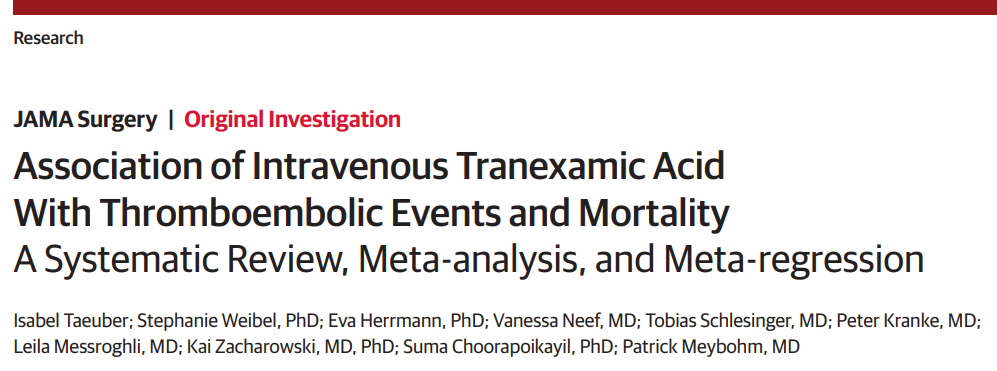Tranexamic acid (TXA) is a highly potent antifibrinolytic agent and has therefore been used for many decades to treat severe bleeding. The pharmacological effect of TXA is based on the blocking of lysine binding sites in the plasminogen, thereby preventing its binding to fibrin, where it would normally be available for activation by the tissue plasminogen activator.
As part of the emerging Patient Blood Management, the focus is increasingly on an earlier prophylactic administration of TXA to prevent clotting disorders and bleeding and thus to avoid unnecessary blood transfusions. Tranexamic acid thus conserves the valuable blood resources and thereby experiences an increased enthusiasm.
With the expansion of the indication and a liberal application, however, new questions about potential risks come to the fore. There is some scepticism as to whether new blood clots, called thrombosis or embolisms, could occur more frequently due to the prophylactic use of intravenous TXA. These include, for example, leg vein thrombosis, pulmonary embolism, strokes or heart attacks.
The current systematic review, meta-analysis and meta-regression of Taeuber et al. with more than 200 randomized controlled studies, which was published in the journal “JAMA Surgery”, addresses exactly this question. Included studies compare intravenously applied TXA with a placebo or control. More than 125,000 patients from a wide range of medical disciplines were observed.
The results of the study showed for the first time that neither thrombosis nor embolisms occurred more frequently when patients were treated with TXA. At the same time, previous study results have confirmed that the overall death rate and in particular the death rate due to bleeding is significantly reduced by TXA. The results were tested for durability and robustness using different calculation models.
In summary, the benefits of intravenous administration of tranexamic acid as a prophylaxis outweigh the potential thromboembolic risk, thus forming an important building block in patient blood management for preventing clotting disorders, reducing the risk of bleeding and protecting the valuable resource blood.
The original work can be found at this link.

